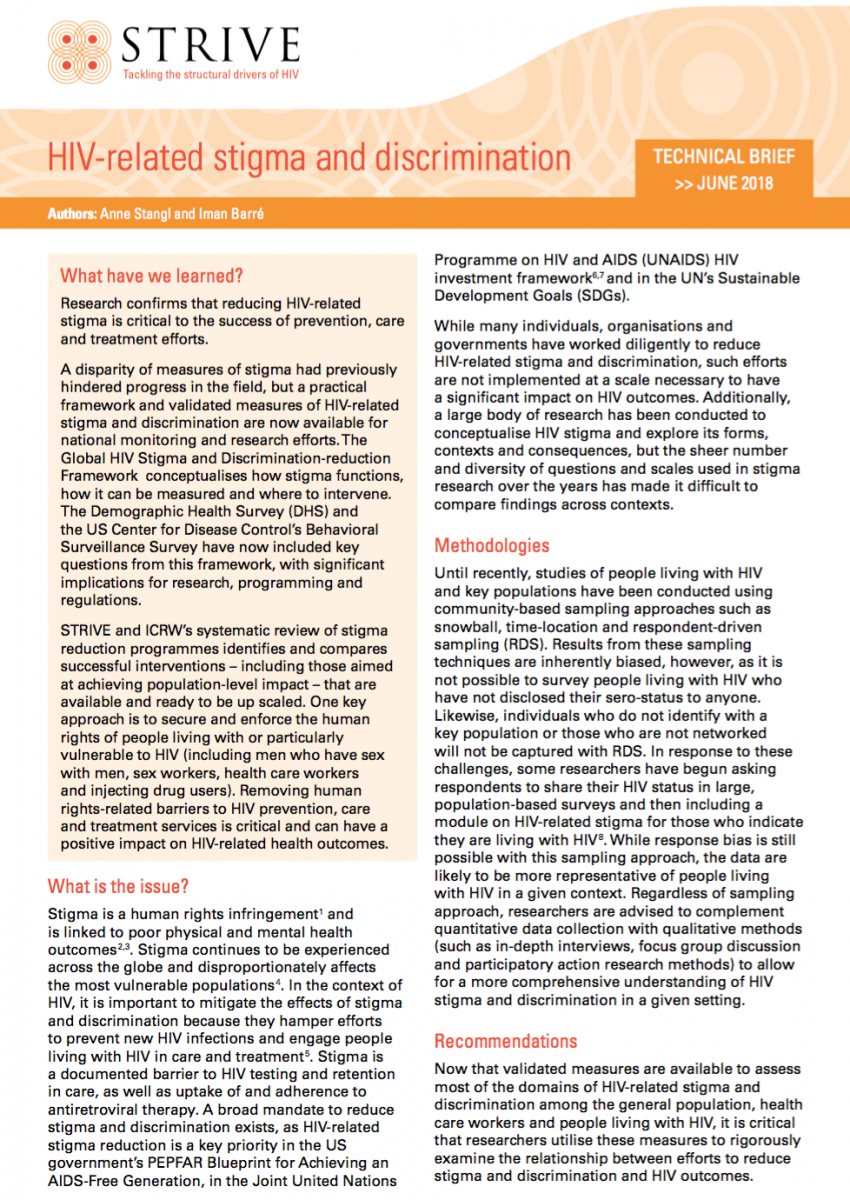Research confirms that reducing HIV-related stigma is critical to the success of prevention, care and treatment efforts.
A disparity of measures of stigma had previously hindered progress in the field, but a practical framework and validated measures of HIV-related stigma and discrimination are now available for national monitoring and research efforts.The Global HIV Stigma and Discrimination-reduction Framework conceptualises how stigma functions, how it can be measured and where to intervene. The Demographic Health Survey (DHS) and the US Center for Disease Control’s Behavioral Surveillance Survey have now included key questions from this framework, with significant implications for research, programming and regulations.
STRIVE and ICRW’s systematic review of stigma reduction programmes identifies and compares successful interventions – including those aimed at achieving population-level impact – that are available and ready to be up scaled. One key approach is to secure and enforce the human rights of people living with or particularly vulnerable to HIV (including men who have sex with men, sex workers, health care workers and injecting drug users). Removing human rights-related barriers to HIV prevention, care and treatment services is critical and can have a positive impact on HIV-related health outcomes.
This brief provides an overview of the key findings and presents the existing and STRIVE evidence that supports them. The brief also gives an overview of the issue, the revised methdologies to be used going forward and recommendations for researchers working within the field.




